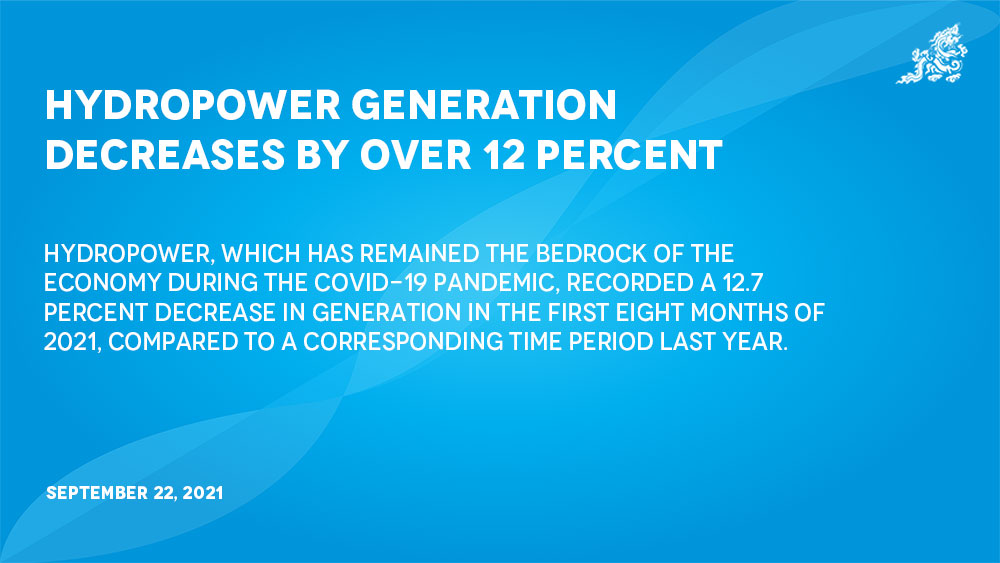MB Subba
Hydropower, which has remained the bedrock of the economy during the Covid-19 pandemic, recorded a 12.7 percent decrease in generation in the first eight months of 2021, compared to a corresponding time period last year.
Total electricity generation from January to August this year in the six hydropower plants that are in operation fell to 10,520.778 Gigawatt hours (GWh) from 12,046.747 GWh during the window of time in 2020, according to the Druk Green Power Corporation (DGPC).
Tala, Chukha, Kurichhu, and Basochhu hydropower plants are directly under DGPC. The Mangdechhu plant is under the Mangdechhu Hydropower Project Authority (MHPA), although the operation and management component is managed by DGPC while Dagachhu is incorporated under the Companies Act.
The country exported 7,536.466 GWh of electricity worth Nu 20.72 billion (B) to India in the first eight months of the year. A total of 1,590 GWh, worth Nu 2.31B, was sold in the domestic market.
DGPC attributes the decrease in generation to lower hydrological flows and disruptions in generation at the Tala plant.
DGPC’s managing director (MD), Dasho Chhewang Rinzin, said that electricity is one commodity that could be traded without Covid-19-related restrictions and protocols. “We have been able to seamlessly generate and supply electricity for domestic consumption as well as export surplus energy to India,” he said.
However, he added that the hydrological flows during 2021 were not as good as 2020.
Even without the problems faced at the Tala plant, the managing director said that the aggregate generation for 2021, based on recorded hydrology, is expected to be lower than 2020.
Dasho Chhewang Rinzin said that DGPC faced numerous recurring problems with the Tala hydropower plant in 2021. There has been concern over the appearance of concrete masses at the distributors and nozzle injectors of the generating units.
“We undertook an underwater investigation of the head race tunnel and the surge shaft in March 2021 through an American firm using remotely operated vehicles (ROV), but without loss of generation,” he said, adding that the findings are being reviewed by expert groups to decide on remedial measures, if required.
DGPC also had some problems with the dam intake and desilting chamber gates at Tala. This was followed by a number of problems with the dam radial gates.
DGPC, he added, was able to fix each of the problems as and when they emerged, and the powerhouse is currently fully operational.
Dasho Chhewang Rinzin said that the remaining work related to maintenance and rectification measures that do not affect generation will be undertaken during the upcoming lean season as regular annual tasks for power plants.
Unlike in the past years, this year, unscheduled maintenance and rectification work was necessitated during the monsoon months. Dasho said the maintenance groups had to work around the clock to ensure that generation losses were minimised.
The Tala plant was shut down on July 19 after large chunks of debris clogged the gates of the intake tunnels, due to heavy rain for days.
“We had a number of problems with the dam intake and radial gates and with the desilting chamber gates, the rectification of which in a few cases required a lowering of the reservoir. In those events, we had to either partially or fully shut the power house down while maintenance work was being undertaken,” he said.
As the country’s GDP growth is linked with the growth of the hydropower sector, strong growth in the hydropower generation is expected to offset some impact of the pandemic.
The hydropower sector saw significant growth with energy generation in 2020, with an increase of 31.45 percent. Hydropower exports as a share of GDP increased by 18.7 percent.
Edited by Jigme Wangchuk


